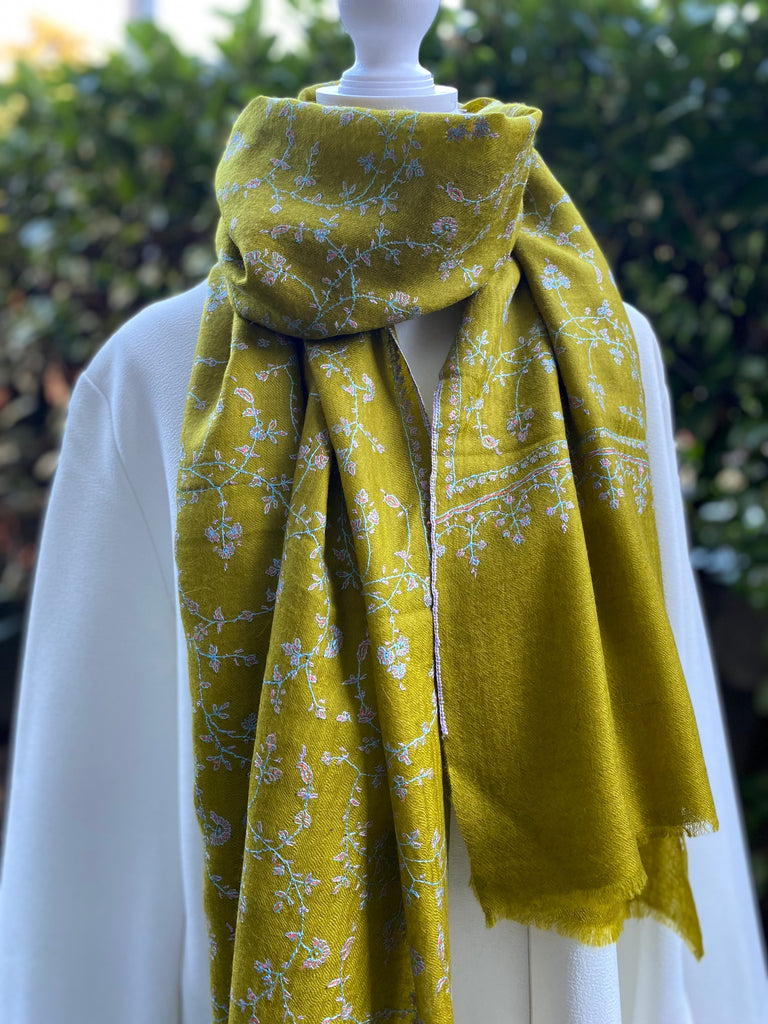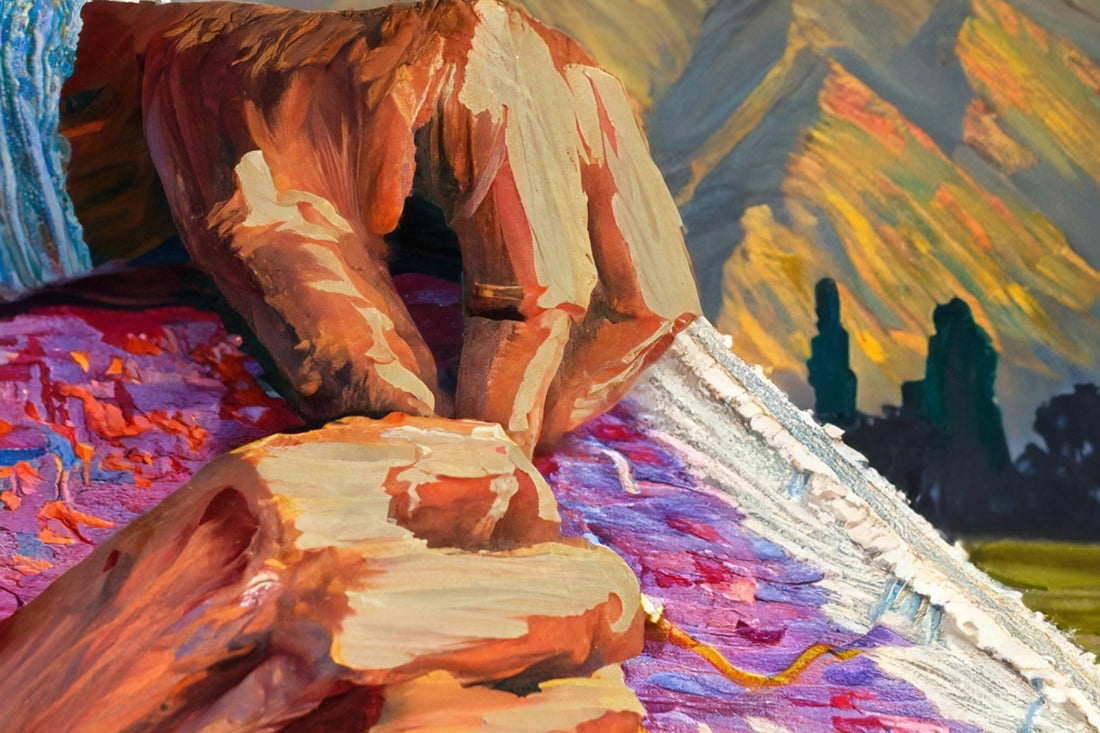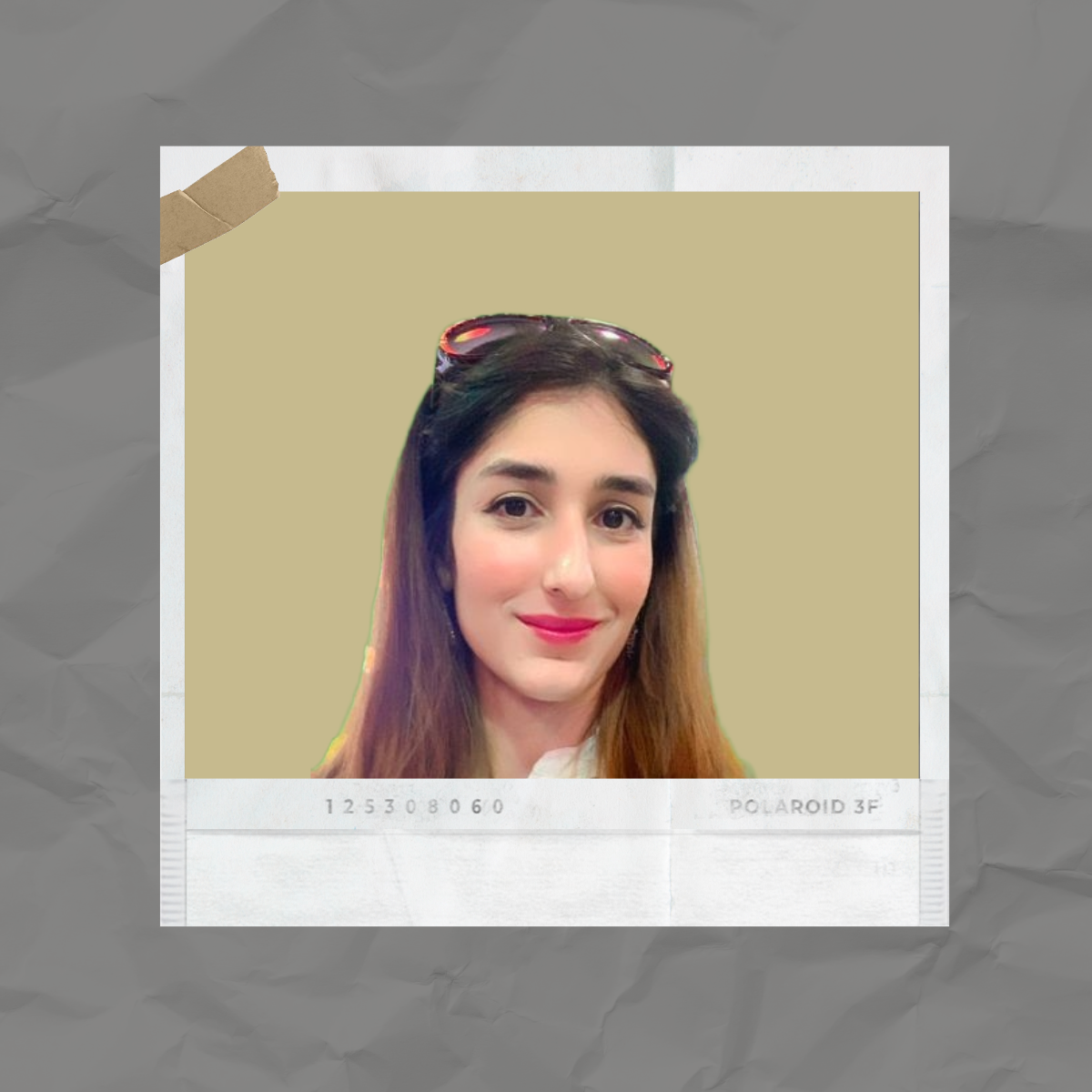A timeless craft has thrived for centuries in the heart of the Himalayas, in the region of Kashmir. Here, skilled artisans have worked their magic on pashmina shawls, creating a tradition deeply rooted in South Asian culture. These shawls, made from pure cashmere or Yangir yarn, undergo a remarkable transformation as skilled hands produce delicate embroidery. What emerges is not just a shawl but a true work of art that reflects the boundless creativity of these artisans. In this article, we will delve into two specific types of embroideries that exemplify this craft: Sozni Jamawar and Sozni Jaalidar.
The Fusion of Sozni and Jamawar: Sozni Jamawar
Sozni Jamawar is a magnificent fusion of two of Kashmir’s most cherished textile arts. Jamawar, often dubbed the crown jewel of Kashmiri textiles, boasts deep Persian roots and reached unparalleled heights during the Mughal dynasty. They are traditionally woven from an intricate blend of ultra-fine pashmina wool, such as pure cashmere, with cotton and silk. Jamawar also occasionally features Yangir, the luxurious fur of the Ibex. Jamawar is known for its vibrant hues, ranging from white and black to turquoise and crimson. The name of this textile can be divided into two parts: 'Jama', meaning robe or shawl and 'War', meaning yard ( 3 feet or 0.9144 metres). In the past, people would acquire a yard of Jamawar Shawl to stay warm during winter. The intricate design in a Jamavar is entirely woven into the fabric, leaving no loose threads on the back.
Marrying this elaborate textile art is Sozni embroidery, an ancient needlework technique named after "sozan," meaning "needle," Sozni is synonymous with Kashmiri craftsmanship. The meticulous process begins with a design sketch and hand-block printing onto pashmina fabric using engraved walnut blocks. The embroiderer then takes the helm, adorning the fabric with intricate stitches of fine silk thread to create elaborate floral and traditional Kashmiri patterns. One of the standout features of Sozni embroidery is the mirror-like replication of the design on the fabric's reverse side—a testament to the intricacy of the craft.

Photo: Sozni Jamawar Pashmina on diamond weave 100% Yangir
The Elegance of Sozni Jaalidar
Sozni Jaalidar shawls are a testament to the intricacy and skill involved in traditional textile arts. "Jaalidar" refers to a net-like pattern, a complex mesh of embroidered motifs that might include natural elements like flowers, vines, animals, and geometric shapes. Each stitch is a precise endeavour, demanding a keen eye for detail and a deeply ingrained understanding of the craft.
The slow, methodical nature of the work contributes to the rarity and value of each piece, and the outcome is a breathtaking piece of art, reflecting both the richness of the cultural heritage and the mastery of the artisan.

Photo: Olive green Sozni Jaalidar Pashmina Shawl on 100% Yangir
Motifs and Inspirations: The Artistic Language of Pashmina Shawls
The artistry woven into each pashmina shawl often draws from the rich tapestry of Persian culture, albeit with contemporary influences. Among the favoured designs, you'll frequently see the rose, known locally as "Gulab," and the almond, or "Badam." In addition, other symbols like the cypress tree ("Sarav"), the Gul E Noor Jahan flower cherished by Noor Jehan, the Narcissus ("Yumberzal"), the Chinar leaf, the Lotus ("Pamposh"), and the vine ("Dachh") are intricately embroidered into the fabric.
Textual art in the form of calligraphy also makes its appearance in these works of textile art. The lush biodiversity of the Kashmir region manifests in some pieces as well, showcasing motifs such as lions, deer, and birds like nightingales. Some pashmina shawls even feature human figures, often in scenes depicting hunting grounds ("Shikargarh") or forest landscapes ("Jangal tarah").
The Intrinsic Value of Embroidered Pashmina Shawls
The art forms of Sozni Jamawar and Sozni Jaalidar stand as cultural treasures, each imbued with its unique narrative. Handcrafted by skilled artisans, these shawls demand a significant investment of time and meticulous attention to detail. It's common for an artisan to devote several months or even years to a single piece, hand-stitching each intricate pattern. This extraordinary craftsmanship justifies the higher cost associated with these embroidered pashmina shawls. When you purchase one, you're not simply acquiring an accessory; you're becoming the custodian of a timeless heirloom and a priceless work of art.
Happy pashmina shopping queens!


